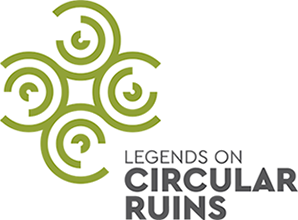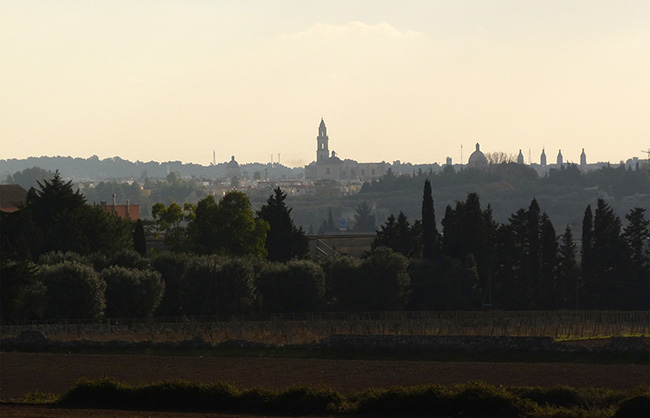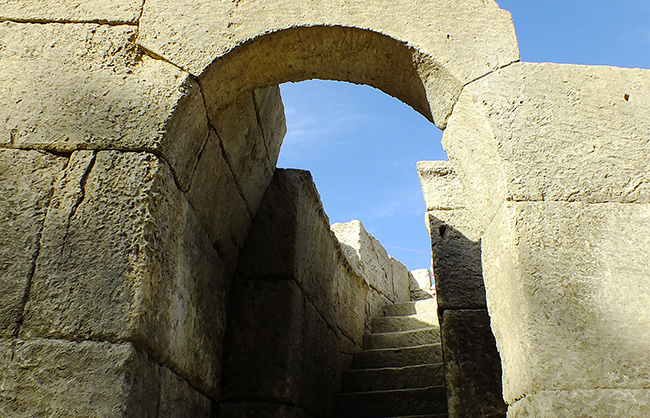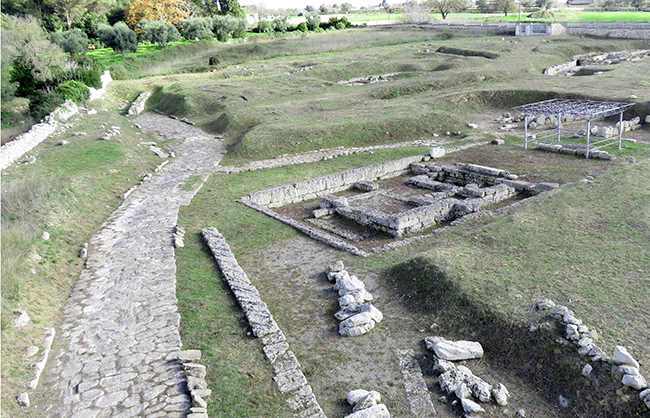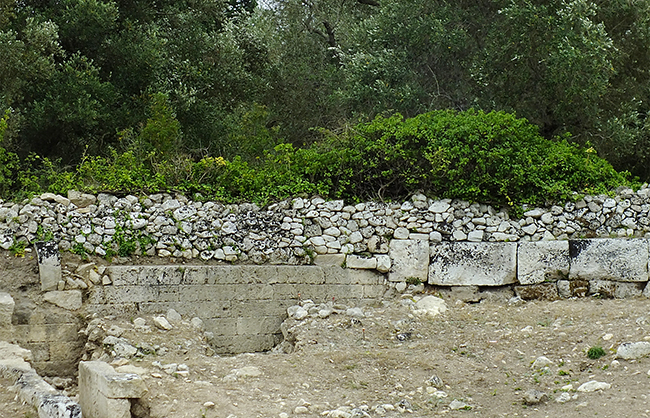Archaeological Site of Ruidae
The final part of South-Eastern Italy is called Salento.The area is renowned as an important cultural cross-roads since ancient times. During the pre-Roman period it was inhabited by the Messapians, most probably a population of Illyrian origins, that reached Salento from the Western Balkans at the end of ninth or early eighth centuries BCE and founded important sites like Rudiae. The culture in that region is the result of the continuous processes of interaction and exchange with the other civilizations of the Mediterranean area (Messapians, Greeks, Romans, Byzantines, Spanish).
Visible traces of this cultural métissage are well preserved in the cultural heritage of Salentine peninsula, from the architecture of the ancient towns to the local traditions.
The archaeological remains of the ancient city of Rudiae are located ca. 3 kilometres (1.8 miles) south-west of Lecce, in the landscape of the “Valley of Cupa”, a karst depression around the town of Lecce (Fig. 1). The settlement, which existed between the 7th century BCE until the late Roman age (4th-5th century CE), is one of the most important archaeological sites in the whole Salento Peninsula.
The legendary Rudiae, mentioned also by Strabon and Ovid, is best known as the birthplace of Quintus Ennius (239-169 BCE), who is considered the father of Latin literature.
From important archaeological excavations started few years ago and still ongoing, it emerged that Rudiae was inhabited since the Messapian Era, and had a relevant urban development in the Classical period (4th-3rd century BCE) and during the Roman age (1st century BCE-3rd century CE). In this period a magnificent amphitheatre was built, brought to light by the recent excavations made by the archaeological team of University of Salento, involved in the project.
The research has revealed the original arena floor, the external wall, the radial corridors (vomitoria) that divided the cavea (the part of the amphitheatre in which spectators sat) into twenty wedges, the substructures for the rows of seats in local stone (Pietra Leccese) and the southern and the northern main entrance, aditus in Latin. These last structures, made up of big limestone blocks, are very well preserved in elevation. Two stairs for eache entrance were found: they allowed access to the top and the bottom of the cavea.
The major axis of the oval measures about 85 meters (approx. 93 yards), the minor axis is less than 70 meters wide (approx. 76 yards); the external perimeter includes a well-trodden path made up of opus signinum. The amphitheatre of ancient Rudiae could host up to 8.000 spectators.
A group of silver coins was found from the layers on which the outer wall of the amphitheatre was erected, dating back to the reign of Domitian and Trajan, which allows to propose a dating of the monument in the first twenty years of 2nd century CE. This dating is confirmed by the discovery of a marble slab with inscription referring to the dedication of the monument. A first reading of the monument allows to read the name of a woman, as donor of the amphitheatre, Otacilia Secundilla, daughter of a Roman senator, that lived in the age of Domitian. The hypothesis of Otacilia, becoming heiress of a Senatorian heritage of 95 CE. and therefore donor of Rudiae's amphitheater, is theoretically compatible with the chronology of the inscription. Lecce is officially the only city in the world to have two very well-preserved Roman amphitheatres at a distance of three kilometers. The amphitheatre is surrounded by an archaeological area still under excavations and by an extraordinary naturalistic site, with centenary olive trees and dry stone walls.
Main bibliography
- Bernardini M.,
- La Rudiae Salentina, Lecce 1955.
- D’Andria F.,
- Rudiae e il suo anfiteatro, Lecce 2017.
- De Giorgi C.,
- Lecce sotterranea, Lecce 1907.
- Delli Ponti G.,
- Edizione archeologica della carta d’Italia al 100.000, F. 204 (Lecce), Firenze 1968.
- Delli Ponti G.,
- Rudiae (1), in BTCG, XVI, Pisa 2001, 135-145.
